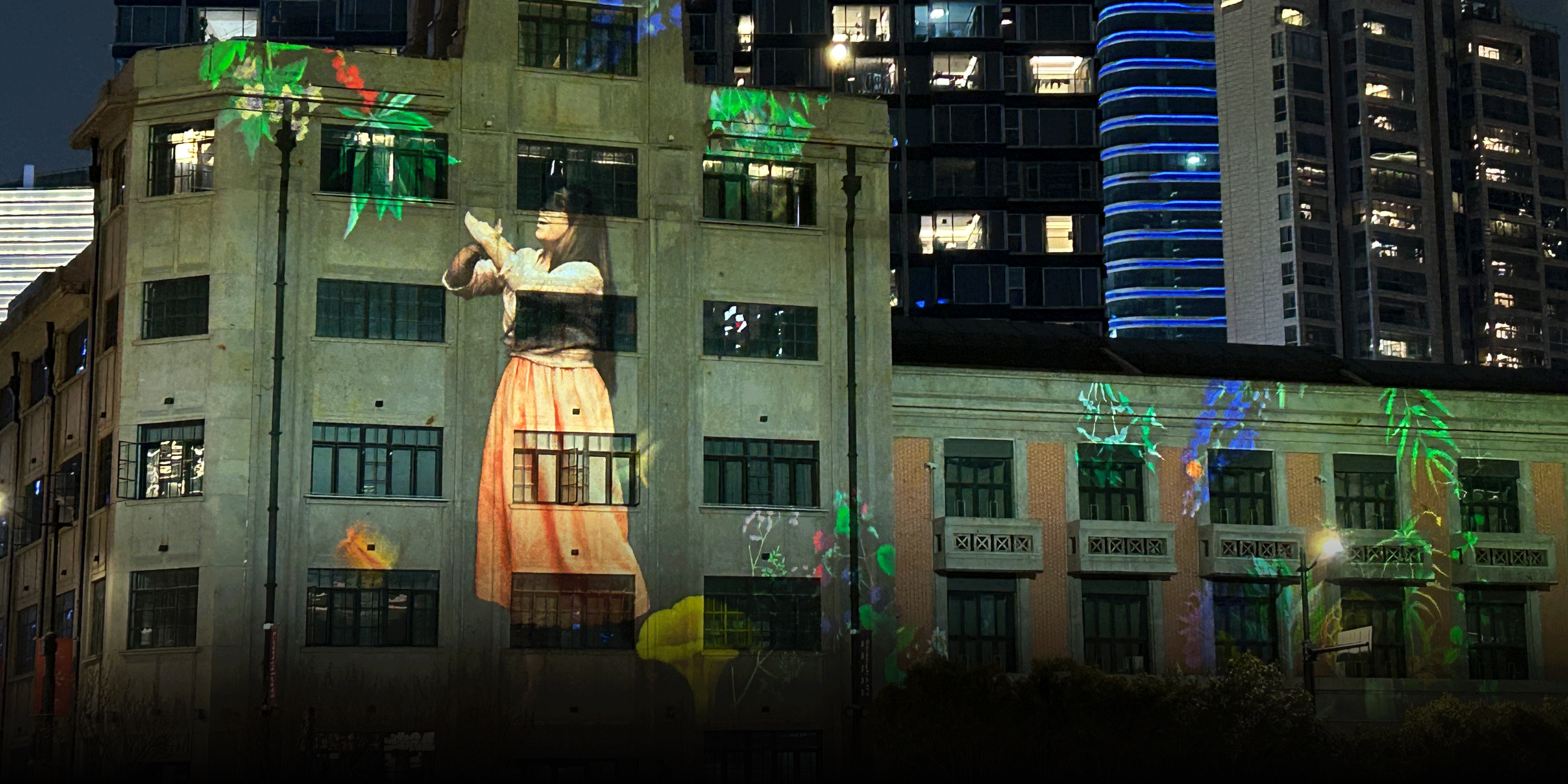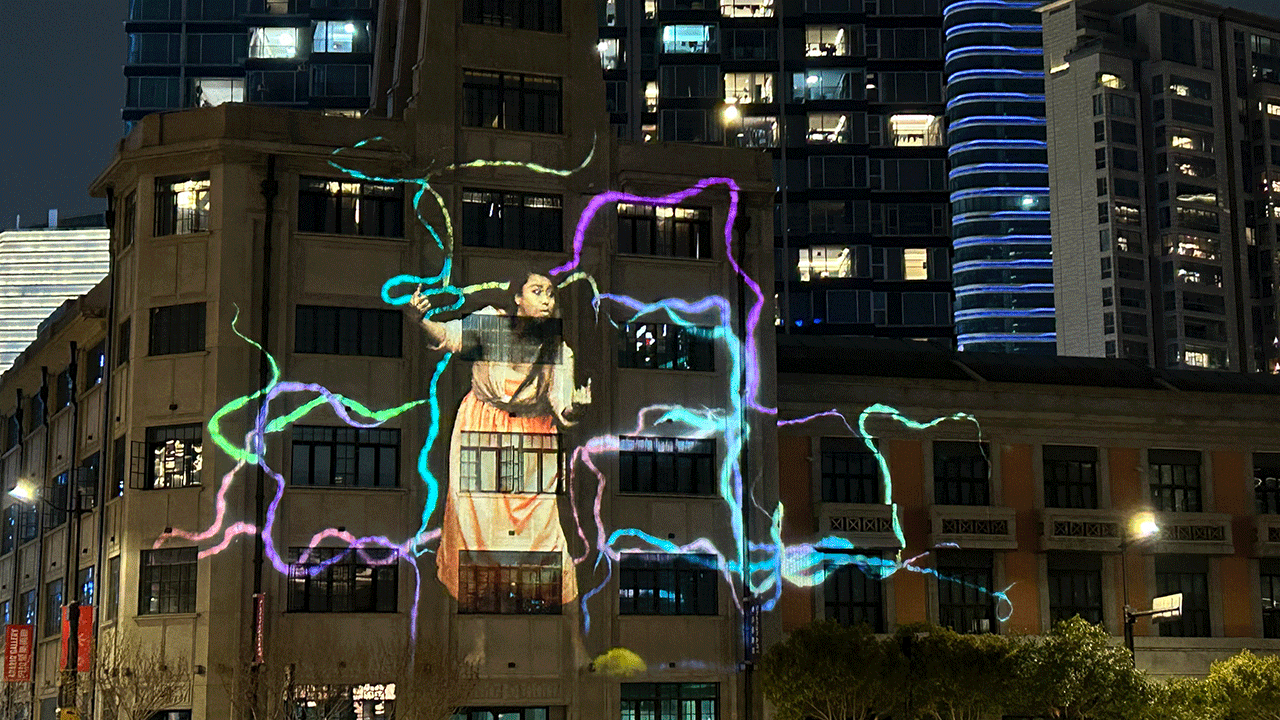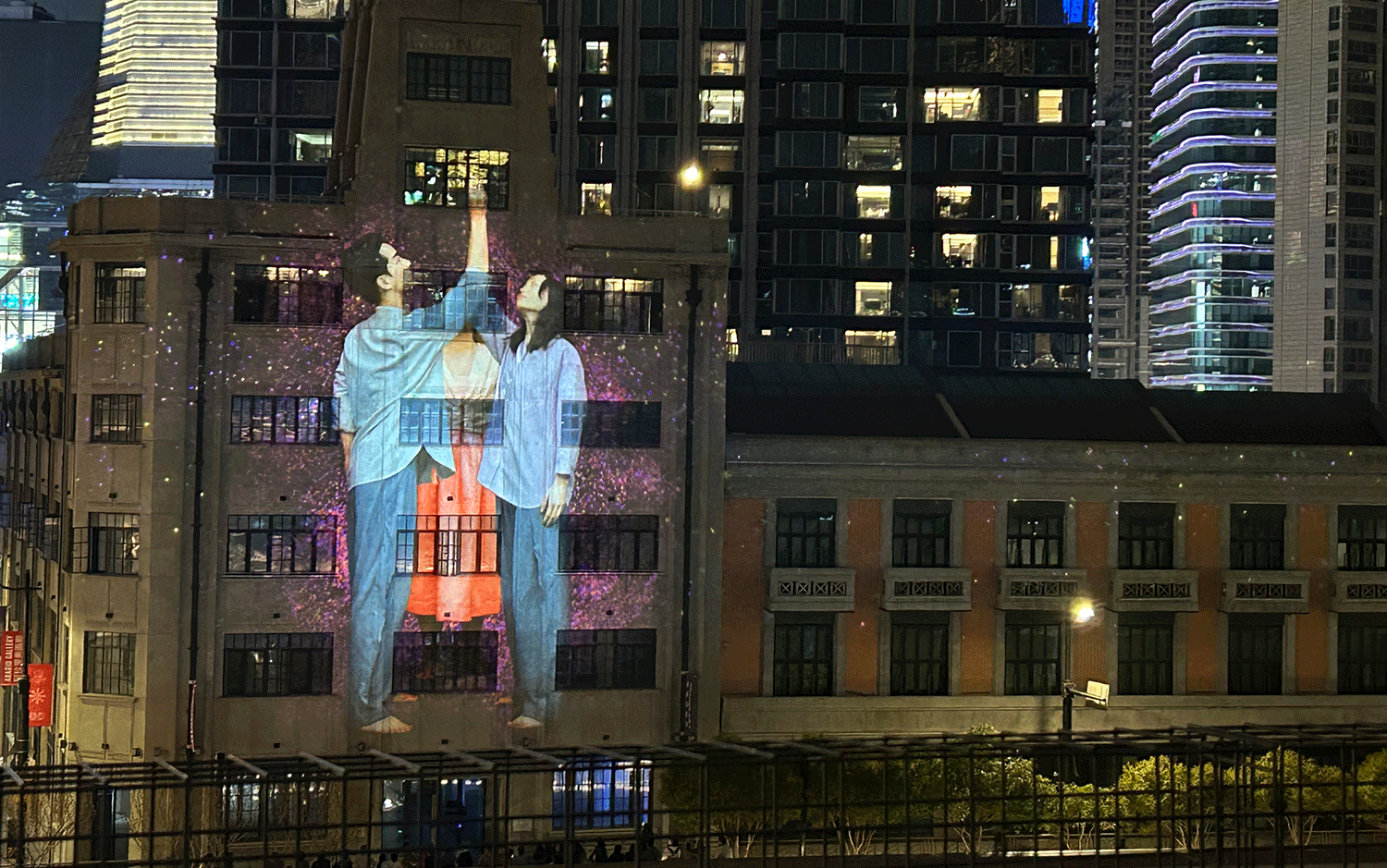
What Does Climate Justice Look Like in a Language Without Sound?
SHANGHAI — In Night Bloom, a projection artwork created by deaf artists from China and the UK, the answer unfolds in just movement, shadow, and light. As animated birds take flight and luminous vines scale Shanghai’s skyline, the dancers’ hands tell a story of exclusion, resilience, and renewal — all without a single spoken word.
Set against the banks of Suzhou Creek, this one-time performance reimagined climate storytelling through deaf expression, blending sign language, digital art, and cross-cultural exchange.
Three deaf dancers from China combined Visual Vernacular — a form of sign-based storytelling using expressive movement — with Chinese Sign Language to bring a digital landscape to life. Flowers bloomed, birds took flight, and glowing fungi spread across buildings.
The performance blended climate metaphors with deaf experience: sudden storms and wilting plants stood for exclusion; flourishing gardens symbolized hope. When a violent storm shattered the world they’d built, the dancers reappeared — alone at first, then reunited — to begin again.
Co-created by British artist Cathy Mager and Shanghai deaf performer Hu Xiaoshu, Night Bloom grew from a yearlong collaboration between deaf communities in the UK and China. “Shanghai has never hosted a public projection project like this — one that amplifies deaf culture, sign language, and our often-overlooked community,” Hu said.

The idea took shape when Mager and her team became the first international deaf visitors to the legendary Wednesday gatherings in Lu Xun Park — a quiet ritual of connection that has brought deaf locals together for over 50 years. Each week, dozens gather to play cards, practice tai chi, and swap stories in Chinese Sign Language.
“Their curiosity was palpable — they asked about our origins, our work, and our sign names,” Mager recalled. She shared photos from past projects on her laptop. “It was a profoundly special exchange, bridging cultures through lived experience.”
Night Bloom used projection mapping and sign language dance to explore how deaf communities navigate climate crises and communication gaps. “When storms or disasters occur, deaf people often receive warnings too late because there are no sign language alerts,” said Hu. “This project shows those challenges — and how sign language can become a tool for climate communication.”
The work also challenges assumptions about whose voices matter in climate discussions. “Deaf people are uniquely skilled at adaptation,” said Mager. “Every day, we navigate a world not designed for us, constantly adjusting to survive.”
True understanding, she added, often requires firsthand immersion. “Projection artwork gains power when integrated with architecture and environment,” Mager said. “Excluding our resilience from climate conversations means ignoring survivors whose insights could shape a more equitable future.”
Dom Hastings, director of arts at the British Council in China — which supported the project — echoed that sentiment. “Night Bloom shows how art can push boundaries, advocate for inclusivity, and raise awareness about the world’s most pressing challenges.”

Mager noted that while both countries use storytelling to engage with climate change, their approaches diverge. In China, deaf artists often harness social media to spread climate messages quickly and visually.
In the UK, Hu added, climate-themed art tends to lean toward activism and civic engagement, while Chinese works are more metaphorical and emotionally driven — exploring nature, loss, and the layered perceptions surrounding marginalized communities.
She hopes Night Bloom can serve as a model — blending sign language, physical expression, and multisensory experiences — that moves beyond traditional theaters and into public life: schools, urban planning, and everyday cultural spaces.
“I hope the audience left with a renewed sense of their own responsibility in climate change,” she said, “and an awareness of every diverse group’s importance in building a sustainable future.”
For longtime members of Shanghai’s deaf community, the moment carried a deeper resonance. He Lifeng, a retired teacher, stood by the Suzhou Creek and watched Night Bloom unfold against the skyline. He had contributed handpainted sketches to the piece — transformed into butterfly wings that fluttered across the buildings.
“This is the first projection artwork created by deaf artists I’ve seen in 40 years,” he signed. “We deaf audience members could fully immerse ourselves in the dancers’ visual storytelling about climate change and biodiversity crisis. Though we cannot hear, our capabilities in artistic creation are exceptional.”
(Header image: A scene from Night Bloom projected on a building in Shanghai, March 29, 2025. Fan Yiying/Sixth Tone)










